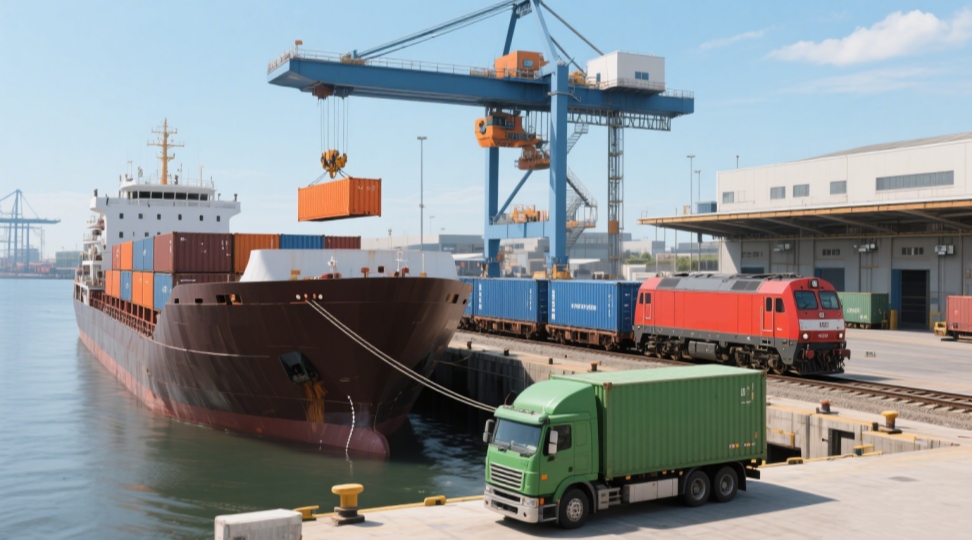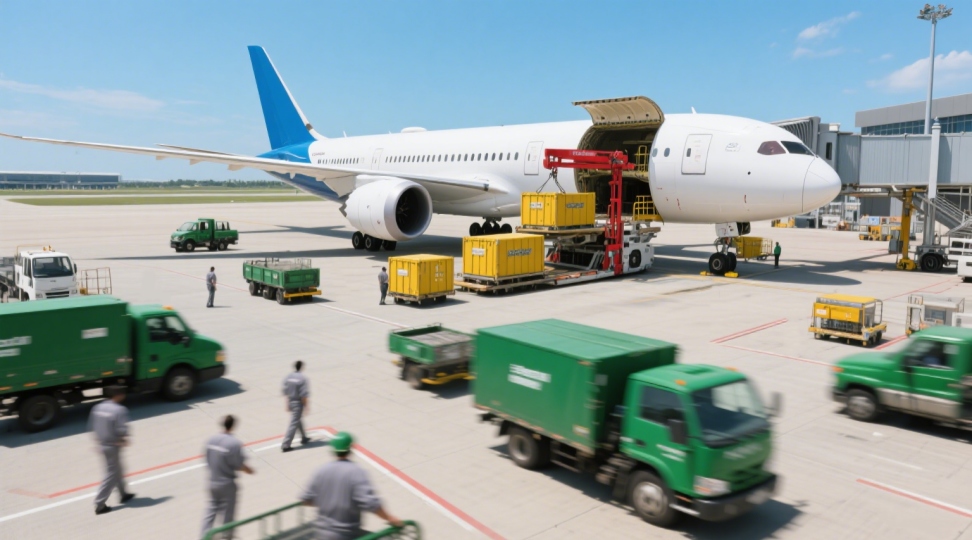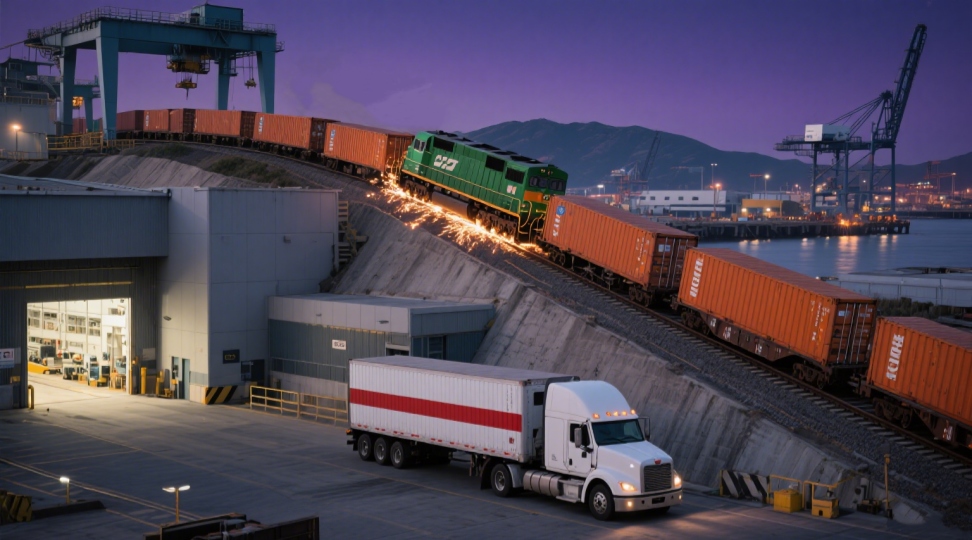Quelles sont les 6 principales méthodes de transport en logistique ?

Dans le marché mondialisé d’aujourd’hui, transport La logistique est essentielle pour assurer la circulation des marchandises au sein de chaînes d'approvisionnement complexes. Les différents modes de transport, comme le camion, le bateau, l'avion et le train, présentent chacun des atouts uniques. Comme le souligne une source logistique, « comprendre les différents types de transport est primordial ». Avec l'essor du commerce international, choisir le mode de transport optimal peut réduire considérablement les coûts et les délais de livraison, tandis que de mauvais choix peuvent nuire aux budgets et à l'environnement. Ce guide examine les six principaux modes de transport logistique : le transport routier (camion), aérien, ferroviaire, maritime (mer), par pipeline et multimodal. Pour chaque mode, nous abordons ses avantages, ses limites et ses cas d'utilisation courants. En maîtrisant ces modes de transport et en collaborant avec des transitaires experts, les entreprises et les e-commerçants peuvent rationaliser leur transport logistique et gagner en efficacité.
Le transport routier (camionnage) offre une livraison flexible de porte à porte et constitue l'épine dorsale de nombreuses chaînes d'approvisionnement. Aux États-Unis, par exemple, les camions transportent environ 72 % de la valeur totale du fret, soulignant la prédominance du transport routier. Cette polyvalence confère au camionnage une excellente capacité de distribution locale ou régionale. Cependant, les camions peuvent être ralentis par la circulation ou les conditions météorologiques et consomment généralement plus de carburant par tonne-kilomètre, ce qui augmente les coûts et les émissions. Points clés pour le camionnage :
Avantages : Le transport routier assure la livraison directe de l'entrepôt à la destination, en traitant des chargements petits ou partiels de manière rentable. Il offre une grande flexibilité pour les trajets courts et moyens et permet d'atteindre des zones non desservies par le rail ou les ports.
Limites: Le transport routier de marchandises peut être ralenti par les embouteillages, les tempêtes ou l'état des routes. Il produit également des émissions de carburant relativement élevées par rapport au transport ferroviaire ou maritime.
Idéal pour : Expéditions à courte distance ou urgentes (produits frais, produits de détail, petits colis) et toute cargaison nécessitant une livraison directe au dernier kilomètre.
2. Transport aérien
Transport aérien C'est de loin le mode de transport le plus rapide, capable de transporter du fret d'un continent à l'autre en quelques heures. Les grands aéroports et les flottes de fret aérien relient les marchés du monde entier. Cette rapidité rend le fret aérien idéal pour les articles urgents et de grande valeur. En revanche, le fret aérien est coûteux au kilogramme et strictement réglementé : la plupart des avions ont des limites de taille et de poids strictes et interdisent de nombreuses matières dangereuses. Points clés pour le fret aérien :
Avantages : Une vitesse inégaléeDes expéditions qui prennent des semaines par voie maritime peuvent arriver en quelques heures par avion. Le fret aérien permet un réapprovisionnement et une rotation des stocks rapides.
Limites: Coût élevé et restrictions. Le transport aérien est le mode de transport le plus coûteux et impose des limites de taille et de poids strictes, ainsi que des règles de sécurité strictes. Il est également vulnérable aux intempéries et aux retards dans les aéroports.
Idéal pour : Produits légers, de grande valeur ou périssables pour lesquels le temps est critique – par exemple, produits électroniques, produits pharmaceutiques et pièces d’urgence.

3. Transport ferroviaire
Le transport ferroviaire transporte d'importants volumes sur de longues distances à un coût inférieur à celui des camions. Les réseaux ferroviaires modernes (par exemple, en Europe, en Chine et en Amérique du Nord) offrent un compromis entre rapidité et coût. Les trains tractent des dizaines de wagons ou de conteneurs à la fois, ce qui les rend très économes en carburant pour les charges lourdes. Cependant, le transport ferroviaire nécessite des terminaux fixes : les marchandises doivent être transportées par camion vers ou depuis la gare de triage, ce qui augmente le temps de manutention et la complexité. Points clés pour le transport ferroviaire :
Avantages : Extrêmement rentable pour le vracLe rail a une capacité de transport bien supérieure à celle d'un camion et est relativement peu affecté par les intempéries. Les longs trains peuvent transporter du charbon, des minéraux, des céréales et de gros produits manufacturés en une seule expédition.
Limites: Itinéraires et horaires fixes. Les lignes ferroviaires ne circulent que là où il y a des voies ferrées. Les expéditeurs doivent coordonner le transport des camions depuis et vers la gare. Le transport en commun est généralement plus lent que la route pour les courts trajets et offre moins de flexibilité.
Idéal pour : Transport terrestre de marchandises très lourdes ou volumineuses. Le rail est idéal pour les marchandises en vrac comme le charbon, le pétrole brut, le bois, les céréales ou les machines qui supportent un transit plus lent.
4. Transport maritime (maritime)
Le fret maritime est l'épine dorsale du commerce international. Aujourd'hui, plus de 80 % du commerce mondial en volume Transport maritime. D'énormes cargos et pétroliers traversent les océans pour transporter des charges colossales. Le transport maritime est incroyablement bon marché à l'unité et permet de transporter bien plus de marchandises que tout autre mode. Cependant, il est très lent et les expéditions maritimes peuvent subir des retards dus à la congestion portuaire, aux conditions météorologiques ou à des problèmes géopolitiques. Points clés pour le transport maritime :
Avantages : Capacité ultra élevée et faible coût. Les navires océaniques offrent la charge utile la plus élevée (en tonnes par voyage) de tous les modes de transport. Par exemple, un seul porte-conteneurs peut transporter des milliers de voitures ou des tonnes de pétrole brut à moindre coût à travers les océans.
Limitations : Lent et moins flexible. Les délais de transit se comptent en semaines. Les navires naviguent uniquement sur des itinéraires et des horaires maritimes fixes ; les correspondances manquées dans les ports peuvent donc entraîner d'importants retards. Les réglementations douanières et le traitement portuaire peuvent également ralentir les expéditions.
Idéal pour : Expéditions très volumineuses ou lourdes, expédiées lentement. Les matières premières en vrac (pétrole, fer, charbon, céréales) et les produits finis (machines, appareils électroménagers, vêtements) destinés à des marchés lointains sont généralement expédiés par voie maritime.
5. Transport par pipeline
Les pipelines sont des réseaux spécialisés pour le transport terrestre de liquides et de gaz (pétrole, gaz naturel, produits chimiques, eau). Une fois construits, ils assurent un débit continu et efficace, sans escales intermédiaires. Ils sont donc très fiables et sûrs pour le transport de produits fluides. Cependant, les pipelines représentent un coût initial exorbitant et manquent de flexibilité : ils ne peuvent aller que là où ils sont construits et ne peuvent être redirigés. Les déversements ou les fuites constituent des risques importants qui nécessitent une surveillance constante. Points clés concernant les pipelines :
Avantages : Flux continu et à faible coût. Les pipelines fonctionnent 24h/24 et 7j/7, sont largement insensibles aux conditions météorologiques et au trafic, et acheminent le carburant ou les produits chimiques directement de la source à la destination. Une fois opérationnels, ils présentent de faibles coûts d'exploitation par unité.
Limitations : Infrastructure fixe. La construction de pipelines exige des investissements importants. Une fois en place, le tracé est immuable et leur maintenance est complexe. Les réglementations environnementales sont strictes en raison des risques de fuites ou de déversements.
Idéal pour : Hydrocarbures et gaz sur de longues distances. Les pipelines transportent du pétrole brut, du gaz naturel, du pétrole raffiné et des fluides industriels entre les champs, les raffineries et les terminaux.
6. Transport multimodal (intermodal)
Transport multimodal Utilise une combinaison de deux ou plusieurs modes de transport dans le cadre d'un même plan d'expédition. Le transport par conteneurs en est un exemple courant : un conteneur de fret peut être transporté par bateau, puis par train, puis par camion, dans le cadre d'un seul et même contrat logistique. Cette approche exploite les atouts de chaque mode, mais elle ajoute également de la complexité et des points de correspondance. Points clés pour le transport multimodal :
Stratégie: Le transport multimodal (ou intermodal) combine les modes de transport pour réduire les coûts et les délais. Par exemple, les marchandises peuvent voyager à l'étranger par voie maritime, puis poursuivre leur route vers l'intérieur des terres par train ou par camion. Les conteneurs et les palettes standardisées facilitent le transfert des marchandises entre les modes.
Avantages : Flexibilité et efficacité. Combiner les modes de transport peut réduire le coût total et les délais d'expédition. Par exemple, utiliser le rail pour les longues distances et le camion pour le dernier kilomètre peut s'avérer plus économique que la route seule.

Limites : Coordination complexe. Chaque transfert (port ou gare de triage) entraîne un risque de retard ou de dommages liés à la manutention. La synchronisation des horaires et des documents administratifs pour plusieurs transporteurs est complexe.
Idéal pour : Expéditions volumineuses et longue distance exigeant rapidité et économie. Le transport multimodal est idéal pour le commerce international lorsque, par exemple, le transport maritime (rentabilité) et aérien ou routier (rapidité/flexibilité) sont combinés. Il est particulièrement adapté aux marchandises variées (des matières premières aux produits finis) sur des itinéraires complexes.
Choisir le bon mode de transport
Choisir le meilleur mode de transport est une décision cruciale. Ce choix dépend de nombreux facteurs, parmi lesquels :
Fret et distance : Les marchandises lourdes et en vrac sont souvent moins chères par voie maritime ou ferroviaire ; les articles urgents ou légers sont généralement transportés par avion ou par camion.
Vitesse vs. Coût : Le fret aérien et le transport routier accéléré sont les plus rapides, mais les plus coûteux. Le transport maritime et ferroviaire est plus lent, mais bien plus économique pour les volumes importants.
Accessibilité: Existe-t-il des infrastructures ? Le transport ferroviaire et les pipelines nécessitent des infrastructures fixes, tandis que les camions desservent la plupart des destinations. L'emplacement des ports et des aéroports est également important.
Règlements: Les services et agences gouvernementales des transports veillent à l'application des règles de sécurité, de poids et d'environnement pour les camions, les navires et les avions. Les exigences en matière de permis et de douanes peuvent favoriser un mode de transport par rapport à un autre.
Calendrier de livraison: Si les marchandises sont nécessaires rapidement, le temps devient une priorité absolue. Pour les expéditions en vrac non urgentes, la réduction des coûts peut être primordiale.
Objectifs de durabilité : Les alternatives vertes (par exemple, le train, les camions électriques, les voiliers) sont de plus en plus importantes pour les entreprises qui souhaitent réduire leur empreinte carbone.
En équilibrant ces facteurs (poids, volume, coût, vitesse et conformité), les expéditeurs peuvent choisir la solution de transport la plus efficace pour chaque expédition.
Transit et dédouanement
Pour les expéditions internationales ou complexes, de nombreuses entreprises font appel à des transitaires. Un transitaire agit essentiellement comme sous-traitant du client. département des transports. Elle réserve et coordonne chaque étape du transport (camion, train, mer, air) et gère toutes les formalités administratives (connaissements, assurances, dédouanement, etc.). Concrètement, collaborer avec un transitaire signifie qu'une seule entreprise assure la fluidité du transport de vos marchandises entre les différents modes de transport.
Par exemple, DR Trans est un transitaire international proposant des solutions d'expédition multimodales intégrées. Nous sélectionnons la combinaison de transport optimale pour votre cargaison et gérons les transferts intermodaux pour vous. Nos spécialistes prennent en charge le dédouanement et la conformité de chaque expédition. DR Trans offre ainsi un soutien logistique professionnel : nous résolvons les problèmes d'expédition complexes et permettons à nos clients de se concentrer sur leur activité.
Conclusion
En résumé, comprendre les six modes de transport et leurs compromis est essentiel pour une logistique efficace. La route, le rail, l'air, la mer, les pipelines et les modes multimodaux jouent chacun un rôle spécifique. Par exemple, une pièce de rechange urgente peut être transportée par avion puis par camion pendant la nuit, tandis que des matières premières en vrac peuvent traverser les océans puis être acheminées par train. Trouver le juste équilibre entre coût, rapidité et type de fret est essentiel. En choisissant judicieusement et en faisant appel à des experts, les entreprises peuvent rationaliser leurs expéditions.
Un transitaire spécialisé comme DR Trans assure la coordination de tous vos besoins. Nous coordonnons les meilleurs modes de transport, gérons le dédouanement et la documentation pour vous. Ce faisant, nous agissons comme votre service transport, garantissant la sécurité et l'efficacité de vos marchandises à travers le monde. En fin de compte, la meilleure stratégie logistique est celle qui associe votre cargaison à la bonne combinaison de services. moyens de transport, offrant de la valeur aux clients tout en économisant du temps et de l'argent.

















 IPv6 RÉSEAU PRIS EN CHARGE
IPv6 RÉSEAU PRIS EN CHARGE
